Stroke - Understanding Etiology and Developing Evidence-Based Pathways to Achieve Functional Outcomes
Learn something now! - Watch the Online CEU Course Trailer
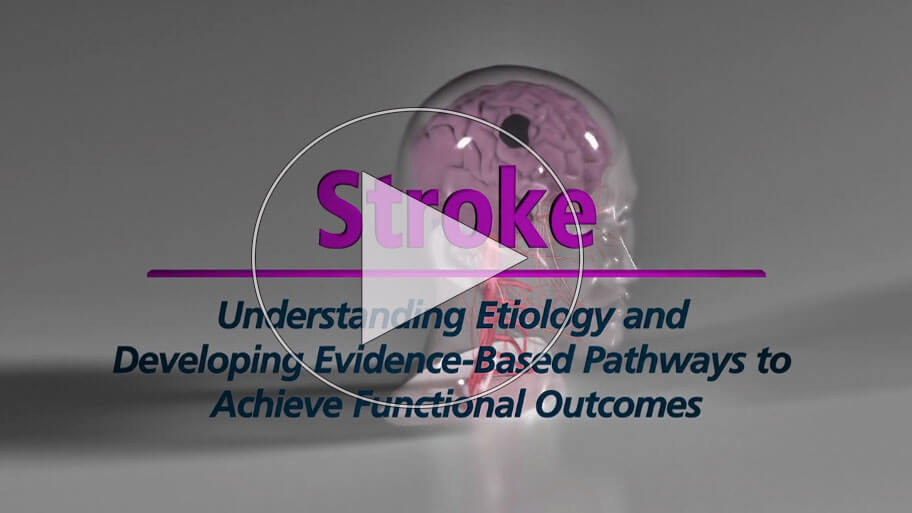
All Access Online CEU for PT, PTA and OT for $189
BEST VALUE - Includes this course and all our online courses
Subscribe Todaytheaters Purchase Now, Instant Online Course Access
Stroke - Understanding Etiology and Developing Evidence-Based Pathways to Achieve Functional Outcomes
$175.00
- CE Hours: 12.0 hrs, 1.2 CEU
- Delivered: Online
- Instant Online Access, Color PDF Manual for Download, 365 days of access, Mobile Ready
- No auto-renewal for this option
All Access Online CEU for PT, PTA and OT
$189
All Access Online CEU for PT, PTA and OT Subscription
1 Year Access with Annual Renewal
State specific course completion certificates.
Chat support
Prices are in US dollars- 12 months of access to all online ceu courses, course tests and state approval certificates.
- Meet all your CE requirements. Pre-approved for PT, PTAs in AK, AL, AZ, CA, CO, CT, DC, DE, GA, HI, IA, ID, IL, IN, KS, MA, ME, MI, MO, MS, MT, NC, ND, NE, NH, NM, NV, NY, OR, PA, RI, SC, SD, TN, TX, UT, VA, VT, WA, WI, and WY.
- AOTA approved.
- Designed for Physical Therapists, Occupational Therapists, Athletic Trainers and Assistants.
- Access to future courses and content.
- Start, stop and resume, right where you left off in a course.
- Real patient interviews.
- Medical expert contributors.
- 3D anatomy and medical illustrations.
- Easy to use learning system for fast access to your courses.
- Award winning content.
- Top instructors teaching evidence based skills and techniques.
Why should a physical therapist, occupational therapist or athletic trainer take this stroke continuing education course?
Stroke is the third leading cause of death in the United States, and it is one of the primary reasons for disability. According to the National Stroke Association, 15 percent of ischemic strokes occur in young adults, representing approximately a 45 percent increase in hospitalizations. Obesity-related lifestyle risk factors among younger people, including hypertension, diabetes, and high cholesterol, are increasingly contributing to these stroke statistics. The development of individualized treatment programs for the stroke patient will differentiate between an active life and one dependent on others.
Rehab clinical tools instructed in this stroke continuing education course to enhance your functional outcomes.
- Techniques to maximize functional mobility with stroke patients in this age population inorder to return them to work, caring for children, and an active lifestyle
- Evaluation tools to identify disinhibition, depression, executive dysfunction, anxiety and other cognitive issues that can impact rehab progression
Specific instruction that will enhance your understanding and ability to deliver better patient care.
- Interconnectivity of cerebral function and identifying the impact of damage to specific anatomical structures and the relationship to cognition, function, and behavior
- Management of tone to promote functional movement
- Prioritization and intensity of treatment to avoid setbacks and to progress the stroke patient within the time constraints
Features unique to this CVA continuing education course.
- Three patient testimonials provide a unique insight into the challenges in developing effective treatment programs .
- Neurosurgeon, physical medicine physician, and physical and occupational therapists detail a multidisciplinary approach to a successful stroke rehabilitation program
- Evidence-based options to assist with making complex decisions that impact the progression of goals in the hospital, outpatient, SNF, and home settings
- Patient lab-demo for gait training following a stroke
- Patient demo for the hemiplegic shoulder
- Recommendations for educational plans for the family and patient to transition out of the hospital
Professional Accreditation
This is an intermediate level course applicable for PT, PTA, OT, AT.Physical Therapy Accreditation: For specific state information use the accreditation verification menu and select your state of license. AOTA: provider #4487, Occupational therapy professional development activity: Occupational Therapy Service Delivery, evaluation and intervention, and Foundation Knowledge: human body, development, and behavior. Athletic Trainers: BOC provider #P2047, category A. This course has not been submitted for Evidence-Based BOC approval..
fact_check Accreditation Verification
Online CEU Course for PT, PTA, OT State Accreditation
Highlights of this Online Continuing Education Course

Upon Successful Completion of this course, the participant will be able to:
- Identify the needs of the stroke patient and family members throughout the recovery process and transition of settings.
- Identify the need importance of working closely with an interdisciplinary team and communicate the need for possible medical intervention.
- Identify the regions of the brain, specific functions and the impact of neuroanatomical lesions in particular regions.
- Identify the different causes for a stroke and the growing trend on the younger population.
- Discuss the different symptoms associated with a cortical stroke versus a subcortical stroke.
- Recognize cognitive deficits and the effect on attention and concentration, memory, slowed information, processing speed, executive dysfunction, language and communication deficits, and visuospatial impairments.
- Recognize when a stroke has caused an attention break down and how this impacts the progression of therapy.
- Recognize how the stroke has impacted executive functions and specific signs that can be present themselves during activities.
- Determine if a patient has poor initiation or has had an injury to the reticular activating system and is unable to self initiate an activity.
- Identity when a patient is presenting with depression or anxiety and discuss their needs with the multidisciplinary team.
- Develop different interaction strategies to accommodate specific types of aphasia.
- Identify field cut symptoms versus inattention signs.
- Identify the different types of apraxia and the impact on the individuals motor ability.
- Recognize the significance of cognitive fatigue and the impact on meeting goals.
- Identify the classic signs with spasticity, hypokinesia, dystonia, spastic dystonia and the differences in tonal patterns.
- Discuss the orthopedic and medical interventions to control tone and neurogenic pain.
- Discuss the advantages and disadvantages of chemical denervation and intrathecal baclofen.
- Differentiate between weakness and poor biomechanical alignment versus dynamic tone including co-contractions.
- Identify if this is a true equinovarus or an apparent equinovarus.
- Utilize specific tools and observations skills when breaking down the gait pattern and identifying dysfunction.
- Develop strategies for assessing and treating cognitive, behavioral, vision, and language deficits for improved outcomes throughout the continuum.
- Support your treatment parameters for the amount of rehab that individuals should be receiving, and the amount of exercise that individuals post strokes should receive with evidence-based research.
- Incorporate passive and active goals into your treatment program.
- Develop treatments that promote isolation of movement and control based upon evidence-based research success.
- Develop a treatment approach to effectively manage the hemiplegic shoulder while incorporating cervical and shoulder girdle manual therapy.
- Perform manual therapy to improve mobility and tone, decrease pain and edema.
- Identify the pain generators that contribute to hemiplegic shoulder pain, and perform basic treatment techniques for management.
- Recognize the importance of positioning to decrease tone and minimize long term musculoskeletal complications.
- Incorporate community integration exercises and activities into your comprehensive program.
Learn From the Expert - Laura Wiggs, PT, NCS, CBIS

Laura Wiggs, PT, NCS, CBIS graduated from Texas Christian University with a Bachelor of Science degree in Kinesiological Studies. She earned a Bachelor of Science degree in physical therapy from UTMB in 1991. In 2000, she earned her certification as a neurological clinical specialist. She is also a Certified Brain Injury Specialist by the Academy of Certified Brain Injury Specialist.
Laura has specialized in the treatment of individuals with brain injury and stroke for the past 27 years. She has treated individuals throughout the continuum of brain injury and stroke from the neuro intensive care unit to community based re-entry. She has published numerous articles on the topic of hypertonia, and has presented both nationally and internationally on this topic. In addition, she has presented at numerous national and international conferences on topics in brain injury.
Laura is a guest lecturer for the UTMB PT program, and is on faculty with the Harris Health System PT Neurological residency program.
Witness a compelling story of a Stroke survivors and his wife
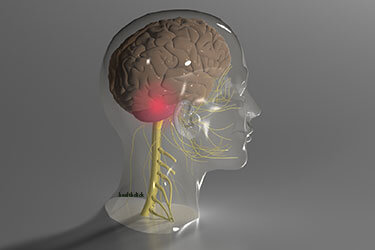
- Watch the use of a Augmentative and Alternative Communication System that assist the patient communicate his thoughts
- Hear their story about their personal journey through the healthcare system
- Learn how this rocket scientist survived and his personal thoughts about the healing process
The Stroke Team and the Causes of Stroke
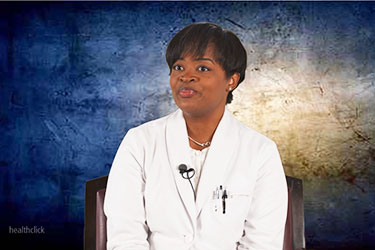
- Dr Rose intro to her clinic and the poem that inspired her to become a rehab medicine doctor
- Medical Expert MD gives vital information for therapists treating strokes
- Dr. Natasha Rose describes her role in the physical medicine team
- Stroke patients are getting younger
- People are coming to facilities earlier because of their awareness and families awareness of symptoms
- Genetic issues that occur in patients including things like Factor V Leiden Mutations or Prothrombin Mutations
- Medical professionals do a mediocre job when it comes to educating people about stroke and recurrence of a stroke
Introduction to Two Actual Patients and Their Stories

- These images are not the actual patients
- I suffered a stroke when I was 28
- One day I had these excruciatingly painful headaches
- The E.R. physicians did not know how to diagnose me
- I desired to get back to work and to get back to life as quickly as possible
- My experience with the healthcare system
- Living with a stroke and recovering has been very annoying
Stroke - Blood Supply to the Brain, Cortical and Subcortical Strokes and Symptoms
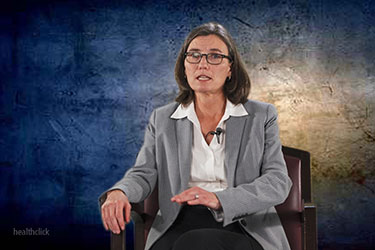
- the importance of our treatment approach for getting people integrated back into the community
- What can we learn as OTs and PTs that are going to help our patients have better outcomes in returning to their lives?
- Every year it is estimated that 795,000 individuals who suffer a stroke, out of that, roughly 140,000 die each year, and 185,000 of those individuals have a recurrent stroke
- From 1989 to 2009 there was roughly a 50 percent decrease in the length of stay
- A stroke is any lack of blood flow to the brain, and this results in a lack of lack of oxygen which then causes whole sequelae of injuries to the brain because of this lack of oxygen.
- The three basic types of ischemic strokes are thrombotic, embolic and lacunar
- Noninflammatory Blood Vessel Disorders
- Inflammatory Blood Vessel Disorders
- Hematological Disorders: Clotting disorders
Understanding Stroke, Implications and Treatment

- Cognitive Problems, Attention Symptoms, Memory, Executive Dysfunction, Impulsivity. Disinhibition, Lack of Awareness, Depression and Anxiety
- Aphasia and Vision deficits
- Defining Tone, Hypertonicity and Hypotonicity, Dystonia, Primitive Patterns and The Management of Tone
- Cerbral Spasticity versus Spinal Spasticity, Spasticity Management and the Spectrum of Care
- Chemical Denervation, Intrathecal Baclofen (ITB)
- How Do We Assess Tone from a Therapy Standpoint?
Managing the Hemiplegic Upper Extremity
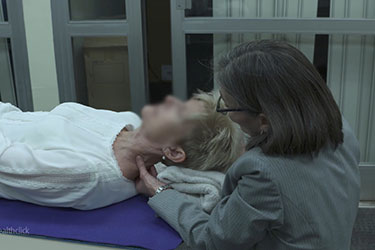
- One of the most challenging aspects is the management of the hemiplegic upper extremity
- Developing significant pain or CRPS-complex regional pain syndrome
- The occurrence of true CRPS versus adhesive capsulitis, rotator cuff injury, and subluxation
- What is the frequency of pain in the hemiplegic shoulder?
- There are a lot of questions around flaccidity
- Cervical Radiculopathy patterns
- Anterior Triangle
- Elevated first rib
Assessment of Gait from a Stroke Patient
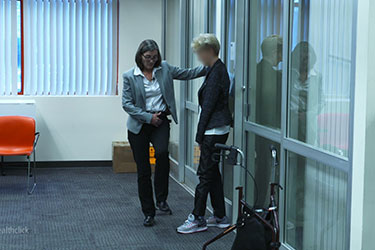
- Differentiate between weakness and poor biomechanical alignment versus dynamic tone including co-contractions
- Equinovarus, true or apparent?
- Understanding the biomechanical component
- The upper extremity during gait is critical to evaluate
- Individuals with stroke are going to have some sort of an increased tone
- View actual patient demonstrations and treatments
Rehab Guidelines, Post Stroke Fatigue, Setting Goals; Orthopedic Considerations, Managing Tone and Improving Function

- What does the research show?
- fatigue, post-stroke fatigue syndrome
- Post-stroke fatigue has been ranked in the top 10 research priorities by healthcare providers and stroke survivors for this next decade
- The components of post-stroke fatigue
- Documentation on sleep disorders and stroke
- Sleep apnea and the risk of stroke
The Occupational Therapist and Preparing for Discharge and Community Ambulation
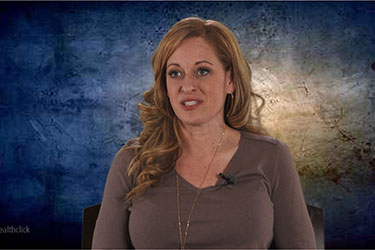
- Preparing a stroke patient and their family for discharge from acute inpatient
- The importance of structuring their day
- The importance of Occupational Therapy and educating the patient
- Prepare a family and a patient for that first day
- Using leisure activities to help with IADLs and ADLs
Course Test - Evaluate your knowledge

- Use the Healthclick proprietary online education system which provides the online student with:
- Worldwide access to high definition video, anatomical animations and images, and written information
- The highest quality film in the industry, you can see the difference!
- Stop and resume within a course, the Healthclick system will optimize your course based on your device, connection and remembers where you left off.
- Real-time course updates. We are always adding to each courses, updating content, adding animations, these are not static courses!
- Evaluate your knowledge with the course test on any device.
- Print your state course certificate for CE credit.
- Take the online test as many times as need in order to achieve a 70 % or greater score.
Responsible CME® - Online CEU Course Testimonials
67.225.255.111I like the course because it is very convenient. I would to see more video demonstration regarding specific evaluation and treatments. -- Myhr Angeli, OT
This course presented with a lot of in depth and detailed material on the stroke population. Wonderful course! -- Oksana, Physical Therapist
It is very informative, easy to understand and straight to the point. -- Vida, PT
This course provided a wealth of information on stroke that will help guide my evaluation and treatment approaches in the outpatient setting. -- Erika, OT
Very informative and organized. -- Kara, Physical Therapist
Good refresher to Neuro-anatomy and how that information applies to working with patients in the clinic. -- Marshawn, PT
Laura Wiggs provided a very informative presentation that kept my interest throughout. Joe Pergamo DPT -- Joe, Physical Therapist
Laura is an asset to the profession of Physical Therapy. She is very knowledgeable on the topic of Stoke. I appreciated her flexibility in presenting the information in an engaging manner via the webinar and zoom sessions during the uncertain times of COVID. The case scenarios involving actual patients really helped apply the information. -- Megan, PT
Very informative and useful information to use when working with stroke patients -- Rebecca, PT
Laura Wiggs is very knowledgeable regarding stroke information and treatment, and backs up her information well with current study results. -- Eliza, Physical Therapist
Excellent tools for post-stroke rehab discussed in the course with great detail and evidence. -- Puja, PT
There was a lot of things I would change to improve this course; however, I did believe that it was an overall good course with good information on things that can get overlooked but are a major impact on our patients especially the younger age range. I really liked the few videos of real life pt examination and assessment with before and during commentary by the PT to get their reasoning and thought process. Lastly, I did think the EBM notes and studies throughout were presented in a practical and good format with clear reasons what the study was about and what the findings were and how that study's findings impact our patients and our tx. -- Alexandra, Physical Therapist
Instructor very knowledgeable. Enjoyed hearing testimony from patients. -- Gayle, OT
Every therapy professional should have access to this course -- Christine, PT
Loved the PT presentor -- Suzanne, OT